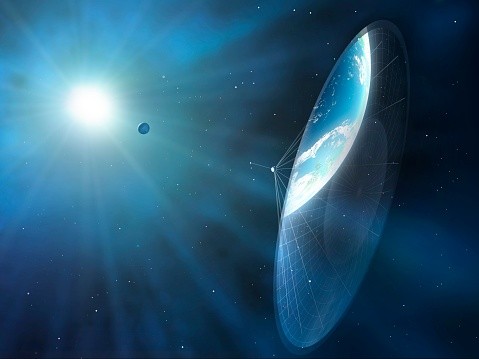Space travel technology has advanced so much within the last 53 years. What used to be impossible is now possible, and it seems like the tech just keeps on progressing.
But amidst the smoke of rocket fuel and high-profile, multi-billion-dollar launches, one specific space exploration tech has gone under the radar: solar sails. And if there's something you should know about them, it's that they could herald in a new age of space exploration.
The solar sail mission LightSail 2 has been up there orbiting the Earth for over two years now. And according to Universe Today, it is providing excellent hard data that could inform humanity's next steps into exploring the cosmos.
Solar Sails 101
Now, you might be asking, "what in the world are solar sails?"
The simple answer is, they basically work like boat sails. The only difference is that they don't use wind to propel a spacecraft (there's obviously no wind in space) but sunlight. That's why they're called solar sails in the first place.

LightSail 2 was a revolutionary mission because it demonstrated that reaching a high orbital altitude is possible without ever using rocket fuel. Furthermore, Bill Nye "The Science Guy" calls it "poetic" that space travel could be achieved by "sailing on sunbeams."
So, how does a solar sail work? According to Planetary.org, literally just like a boat sail.
Light particles, or photons, while not having mass, actually have momentum behind them as they travel through space. When they hit the surface of a solar sail, they give it a tiny push. Every single succeeding photon push will propel a spacecraft forward--and at incredible speeds, too.
Read also: NASA Confirms to Try Latest Solar Sail Technologies in Space by Mid-2022
Just How Fast, Exactly?
A spacecraft powered by solar sails could theoretically reach 10 percent of light speed, according to Exploring Solar Sails. That's all without having to use rocket fuel or other conventional forms of propulsion.
Here's a bit of perspective to give justice to that figure. The speed of light is a blistering 186,000 miles per second. This figure remains constant all throughout the universe, according to the American Museum of Natural History.

10 percent of that, while relatively small, is still a whopping 18,600 miles every single second. If, for example, a plane would go as fast as 10 percent the speed of light, it would take less than a second for it to travel from Los Angeles to Beijing--a distance of 6,248 miles.
Solar Sails in Futuristic Space Travel
So, will future space travel incorporate solar sail technology?
For now, the LightSail 2 mission will continue gathering relevant data. But within the next several decades, this technology could potentially allow man-made spacecraft to reach places in the galaxy previously unreachable by conventional tech.

There's already one mission, Breakthrough Starshot, which plans to send a solar sail-powered spacecraft to Proxima Centauri--the nearest neighboring star to our sun. Today's fastest-existing space travel tech, called gravity assist, would take an insane 19,000 years to reach Proxima Centauri, according to Universe Today
With a solar sail, it will only take a few decades, writes Astronomy. That could be humanity's biggest mission yet, which can be achieved within the current generations' lifetimes.
So for now, forget real-life warp drives and other science fiction space travel tech. Solar sail propulsion is here, and the possibilities are almost endless.
Related: NASA Releases Video Of WILD, Sci-Fi-Like Space Exploration Concepts--Which Ones Can Come True?
This article is owned by Tech Times
Written by RJ Pierce













